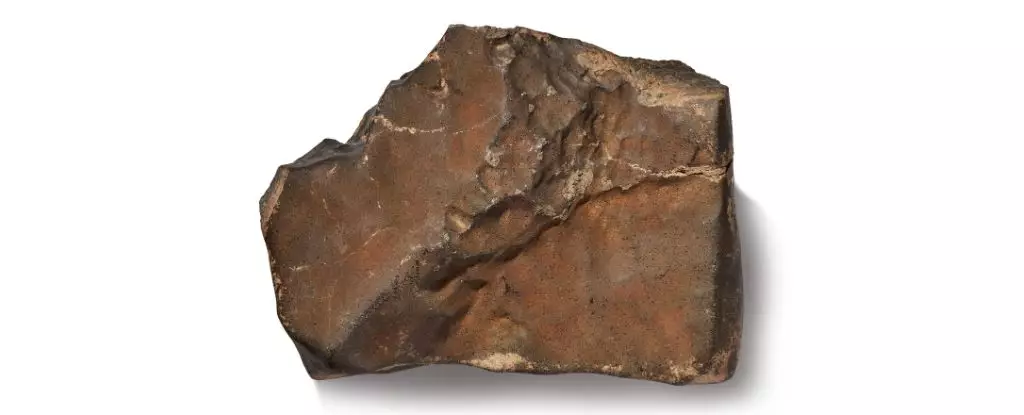The recent auction of a colossal Martian meteorite for an astonishing $5.3 million has ignited a fierce debate surrounding the legal and moral rights to extraterrestrial materials. This 25-kilogram behemoth, unearthed from the harsh Sahara sands of Niger, symbolizes more than just a geological wonder; it embodies complex questions of sovereignty, legality, and scientific stewardship. The fact that it fetched such a high price underscores the growing commercial value attached to space-related artifacts, positioning them as coveted treasures rather than scientific resources. Yet, amid this enthusiasm, the darker shadow of illicit trafficking and unclear ownership rights looms large.
In many regard, the core of this controversy hinges on the notion that space debris, especially meteorites, should be considered part of a nation’s natural heritage. Niger, a country with a rich but often marginalised cultural identity, claims that this particular specimen belongs to its territory by right of discovery. The law in Niger categorizes such meteorites as part of “national patrimony,” asserting sovereign ownership over their scientific and cultural significance. Meanwhile, powerful commercial entities like Sotheby’s insist the meteorite was exported legally. The dispute vividly illustrates a broader tension—should extraterrestrial objects be viewed as commodities that can be sold and auctioned, or are they heritage that must be protected and preserved?
This debate isn’t limited to Niger or the scientific community; it touches on a fundamental ethical question: Who owns what falls from the sky? For private collectors and commercial buyers, the allure of owning a piece of the cosmos is irresistible. However, this rush for lucrative deals risks commodifying what should arguably be classified as shared heritage—an inheritance of humanity, if not the universe. The Mars rock, representing the geological history of another planet, transcends national boundaries and commercial interests, demanding a reevaluation of how we treat celestial debris.
Legal Gray Zones and the Need for International Consensus
The legal landscape governing meteorites remains fragmented and ambiguous. Different jurisdictions interpret ownership rights diversely; for instance, in the United States, landowners often claim rights to meteorites found on their property, regardless of origin. Conversely, countries like Niger have enacted specific statutes designating meteorites as elements of national heritage, complicating cross-border trade and ownership claims. This patchwork of laws emphasizes the urgent need for a cohesive international framework—a universal standard to govern the collection, sale, and preservation of space-derived objects.
The case of the Niger meteorite exposes the gaps in current legal protections and enforcement. As the government probes whether the meteorite was illicitly trafficked, questions about transparency and accountability surface. Did the specimen truly follow legal channels, or was it transferred through a clandestine pipeline that bypassed national regulations? The fact that the meteorite journeyed through multiple countries and ended up in an auction house in New York demonstrates how porous and vulnerable regulatory safeguards are on the global stage.
A concerted international effort, possibly led by agencies like UNESCO or the United Nations Office for Outer Space Affairs, could fill these gaps. Establishing clear ownership rights that respect both national sovereignty and scientific integrity is crucial. Without such consensus, valuable scientific samples risk being lost or exploited, ultimately hindering our collective understanding of the universe.
Scientific and Ethical Imperatives in a Commercialized Space Age
Beyond legal considerations, the sale and ownership of extraterrestrial materials provoke profound ethical debates about scientific responsibility and conservation. The meteorite, designated NWA 16788, is not just a mineral fragment; it is a window into Mars’s geological past, offering clues about planetary formation, volcanic activity, and potentially even past habitability. Its scientific value far exceeds the price tag it commanded at auction.
The temptation to view these samples strictly as commodities ignores their importance for global scientific progress. When such specimens are sold freely on international markets, their context and accessibility might be compromised. Access becomes restricted, often favoring wealthy collectors and private institutions, whereas open scientific study—an endeavor meant to benefit all—may suffer. This raises an uncomfortable question: Do commercial interests undermine the broader quest for knowledge?
Furthermore, there’s an ethical duty to treat extraterrestrial heritage with respect. As Paul Sereno points out, these rocks are “nature’s heritage” and share a common bond with humanity’s quest for understanding. Treating such objects as mere collectibles risks diminishing their intrinsic value as part of the cosmic story. The scientific community advocates for responsible stewardship—ensuring meteorites are studied ethically and preserved for future generations rather than exploited for immediate profit.
Ultimately, the controversy surrounding the Martian meteorite exemplifies the struggle to balance commercial enthusiasm with scientific and moral responsibilities. As humanity extends its reach into space, establishing principles that honor the scientific significance of extraterrestrial objects is not just desirable but imperative. This is a call for a paradigm shift—placing shared human curiosity and respect for the universe above fleeting commercial gains. We must recognize that some treasures, especially those originating beyond Earth, belong to all of us and should be preserved as a testament to our collective pursuit of knowledge.

